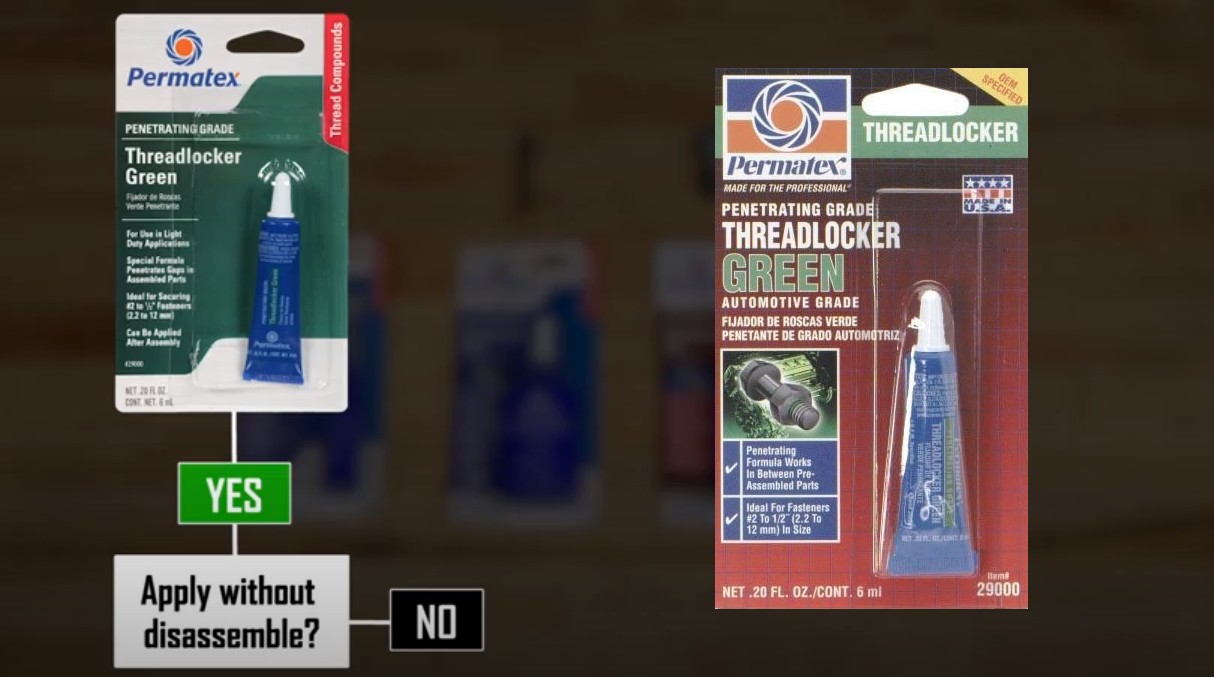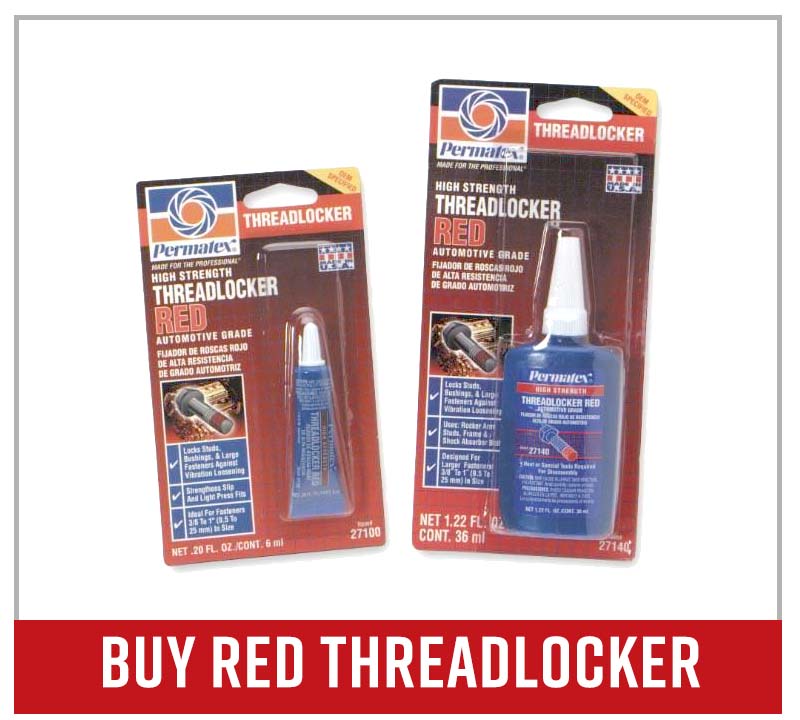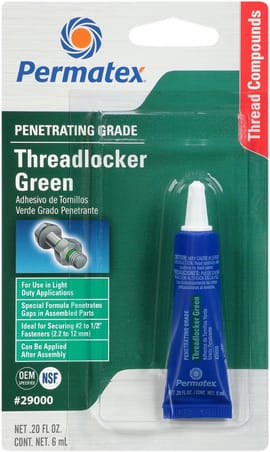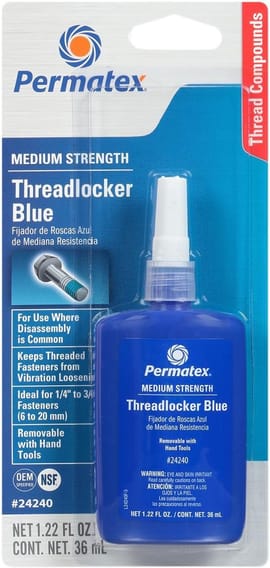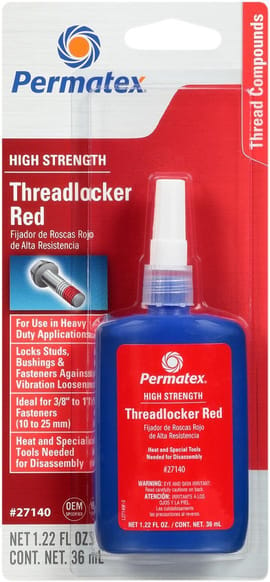Tips for Threadlocker Color Selection
With so many threadlocker color varieties to choose from, picking the right one can be tricky. The amount of information about different types and brands of threadlocker available can be overwhelming.
Watch the video above or read on below for tips on choosing the right color threadlocker.
Why Use Threadlocker
You can’t really go wrong with threadlocker. By applying a drop of threadlocker to any bolt or stud on your motorcycle, quad, side-by-side or outboard motor, you’ll ensure that fastener will hold in place regardless of what vibrations or loads it endures.
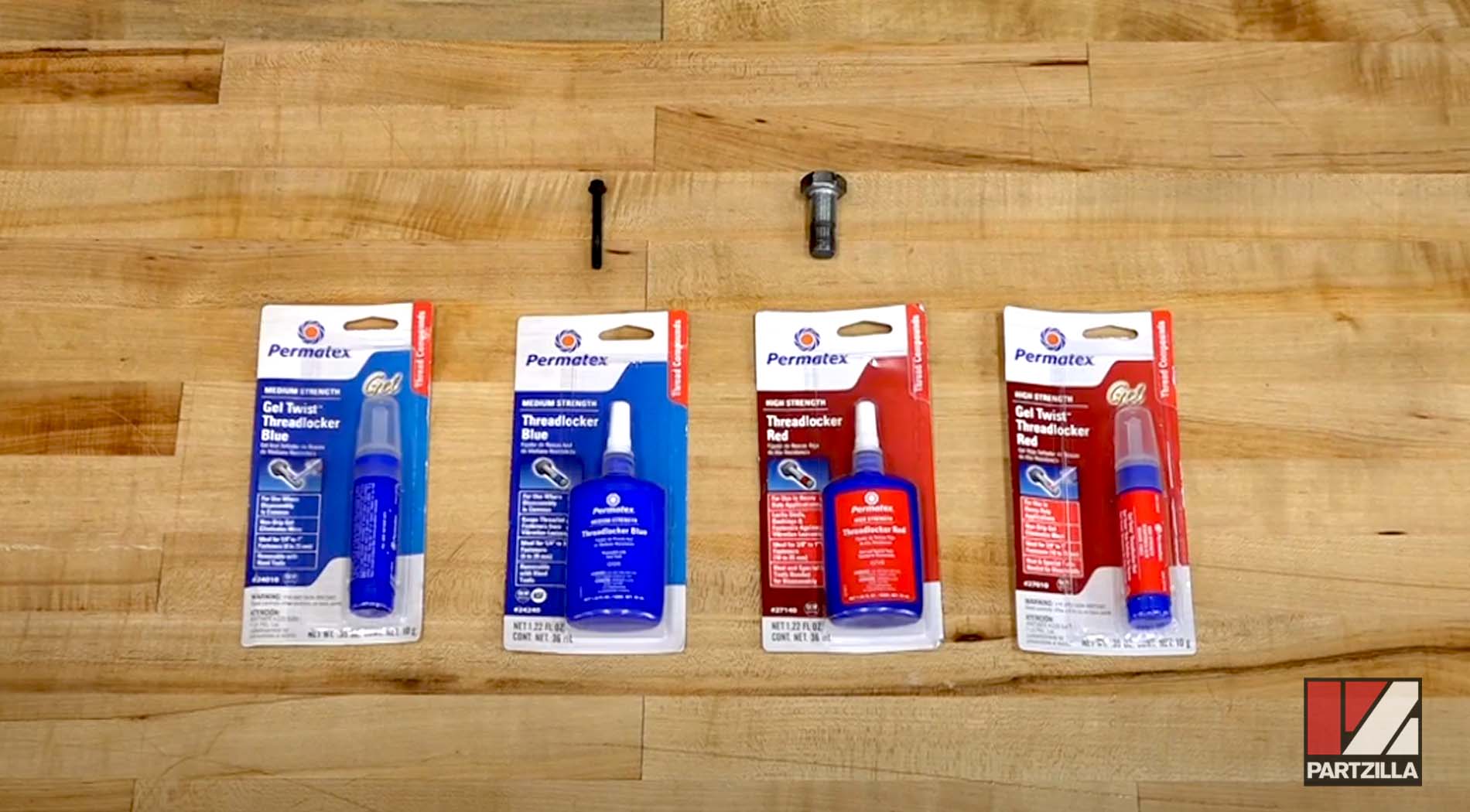
Advantages of Using Threadlocker
Aside from holding a nut or bolt in place, threadlocker offers other benefits. A drop or two of threadlocker on a thread forces out any air from between the threads when the nut or bolt is assembled.

This creates an airtight seal that prevents moisture or dirt from working their way into the threads, causing corrosion and jamming them together. This is particularly useful when applied to outboards that endure salt water, or dirt bikes and ATVs that take abuse from wet or muddy conditions. Threadlocker also acts as a lubricant when installing nuts and bolts, and makes assembling and torquing more precise.
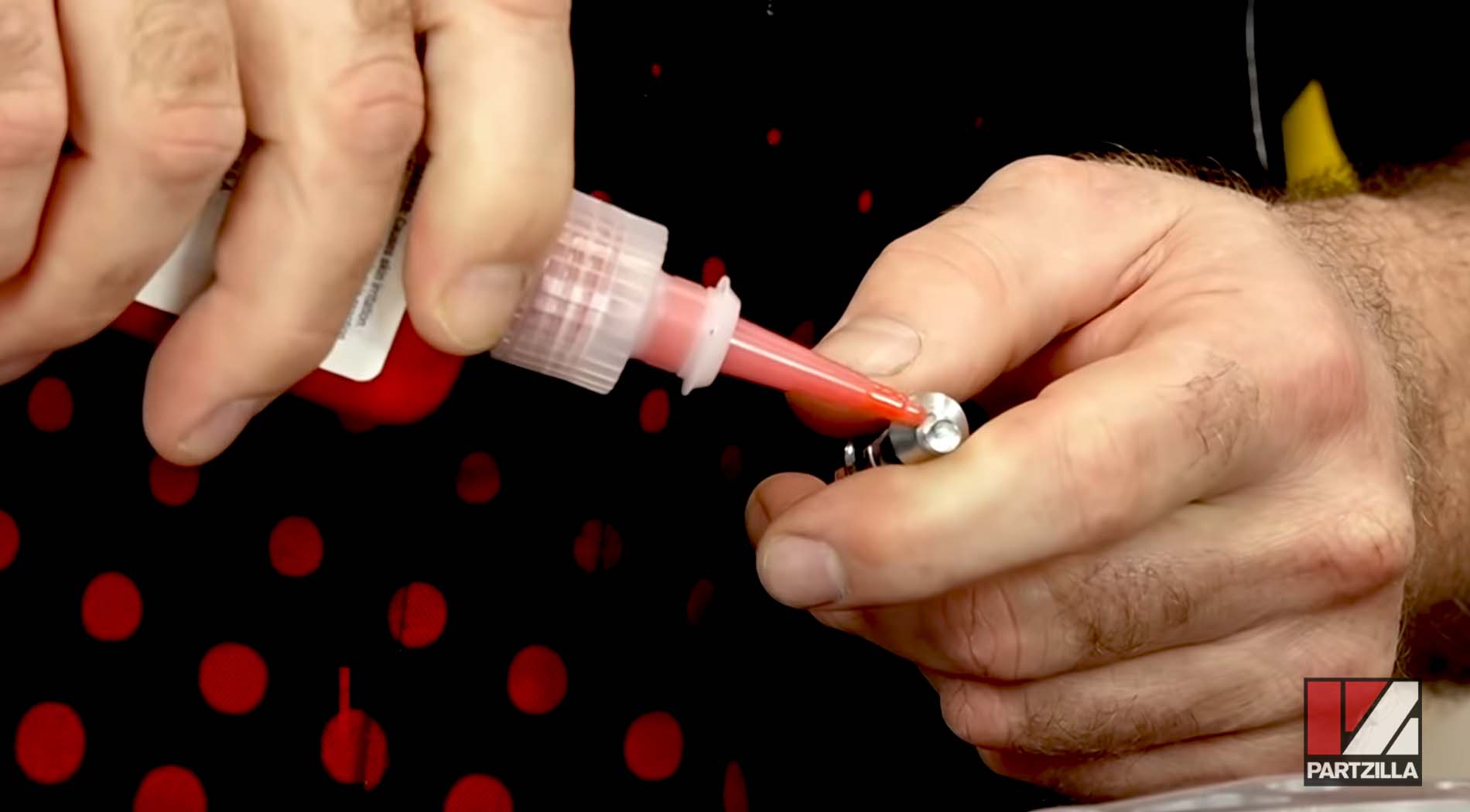
Choosing the Right Threadlocker
To determine which threadlocker will be best for a particular application, ask yourself the following questions:
Question 1: Can the threadlocker be applied before assembly or without disassembling an existing coupling?
Answer: Usually the threadlocker will be applied before the fasteners are assembled, in which case red, blue or purple threadlocker should be used. However, if the fasteners are already assembled and can’t be disassembled, choose green threadlocker, which is formulated to penetrate between the threads of assembled fasteners so they don’t need to be disassembled.
Question 2: What size are the threads being fastened together?
Answer: The larger the diameter of the threads, the more load will be experienced by those threads, and so the stronger the bond generated by the threadlocker needs to be. Typically threads under 3/4th of an inch (19mm) are considered small diameter; threads between 3/4th of an inch to 1 inch (19mm to 25mm) are considered medium diameter; and threads over 1 inch (25mm) are considered large diameter.
Use blue threadlocker for small diameter threads. Blue threadlocker has a shear strength of up to 150 foot-pounds and is typically used on valve cover bolts, oil pan bolts, water pump bolts, shift lever studs, or bolts that need to be held in place, but which probably need to be removed a few times over the lifespan of the vehicle.
Use red threadlocker for large diameter threads. Red threadlocker has a shear strength of up to 300 foot-pounds and is typically used on fasteners that are unlikely to need disassembly. These include cylinder block studs, rocker arm studs, transmission shaft bolts, frame bolts and shock absorber bolts.
For medium diameter threads, consider whether the fastener needs disassembly in the future, and choose the corresponding threadlocker. If it’s something you’ll have to take apart to service or replace at some point, use blue threadlocker. Otherwise, use red threadlocker.

Keep Threadlocker Handy
Threadlocker is inexpensive, and having at least one container of each color available in your toolbox ensures you’ve got the right threadlocker at your disposal for just about any application.
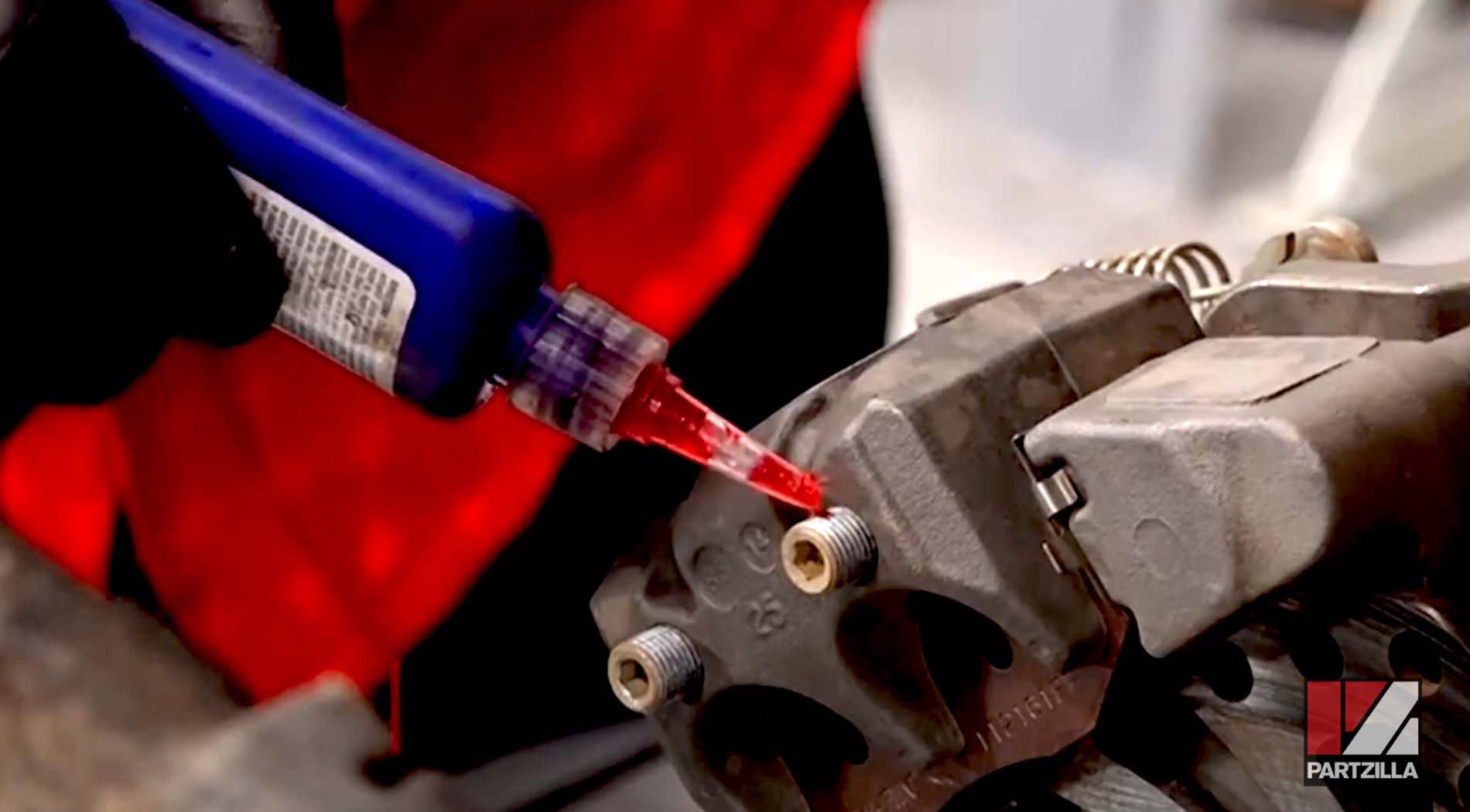
One last thing to bear in mind about threadlocker is that it’s a chemical compound that has a shelf life. Threadlocker loses its effectiveness over time. Make sure to discard any aged threadlocker you have in your toolbox after 12 months and replace it with a new one.
